- What is the Difference between Impressionism and Post-Impressionism Art
- The History of Impressionism
- Impressionism Characteristics
- History of Post-Impressionism
- Post-Impressionism Characteristics
- Difference Between Impressionism and Post-Impressionism
- Conclusion
- Recommended Readings
- Quick Facts and FAQ
Varied participants and the multifaceted techniques – Impressionism and Post-Impressionism are difficult to define. While it is convenient to divide and classify the developments of the 19th and 20th centuries into large category movements (“-isms”), art history including the Impressionism and Post-Impressionism art style is far from linear. Artists evolved and were influenced by predecessors and contemporaries. Therefore, to be accurate, we would have to consider the artists’ developments, their artworks, and the societal influences individually. What were some of the differences between Impressionism and Post-Impressionism style of art? With this brief post, we want to look at some overlapping principles to sketch out what are the characteristics of Post-Impressionism and Impressionism, and what differentiates both movements.
What is the Difference between Impressionism and Post-Impressionism Art

The History of Impressionism
So, what is an Impressionism painting? To come to an Impressionism art history definition, we’ve to start in 1874. This year, a group of artists under the name of the “Anonymous Society of Painters, Sculptors, Printmakers, etc.” organized an exhibition in Paris that would be considered the starting point of the movement of Impressionism. The group, which included artists such as Claude Monet and Edgar Degas, was unified in its opposition to the official Paris Salon, for which a jury from the Académie des Beaux-Arts selected artworks that conformed to traditional standards. Although the independent artists were using a wide range of approaches to painting, they appeared to the public as a group. Art critics responded differently, some of them criticizing the paintings’ unfinished, sketchlike appearance, while progressive voices praised the revolutionary approach by the impressionist artists to depicting modern life.
Although the artists initially strove not to be considered as a unified movement, they soon adopted the term “Impressionists”. Claude Monet’s picture “Impression, Sunrise”, which was exhibited in 1874, gave the movement its name, as the renowned art critic Louis Leroy accused it of merely being an “impression” of a painting, not a finished piece of art.

The independent group had a fluid membership throughout eight Impressionist exhibitions until 1886, and only Pissarro exhibited in all eight shows. Fluctuations in the contributors were mainly evoked by heated discussions about political and philosophical attitudes, with the number of participating artists ranging from nine to thirty. At the time of the last exhibition, many artists had outgrown the Impressionist style, among them Paul Cézanne and Paul Gauguin.
Pointillism and Impressionism: Some artists adapted the new painting approach used by Georges Seurat and Paul Signac. The two artists had developed a technique called “Pointillism” in which they applied small, distinct points of pure colour in patterns to form an image, relying on the ability of the eye to blend the colour spots into a fuller range of tones. This approach would later also be called “Neo-Impressionism” in art history.
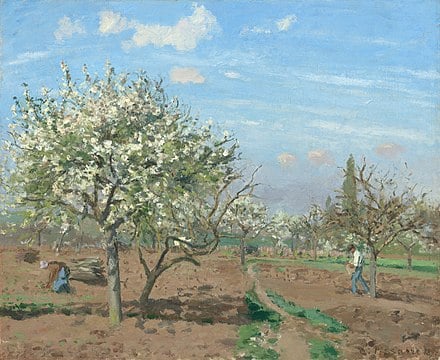
Impressionism Characteristics
Most evident in Claude Monet’s “Impression, Sunrise”, the artists of Impressionism adopted short, broken brushstrokes, that only barely conveyed forms. To emphasize the effects of light, they used pure, unblended colours, also for the depiction of shades, where instead of neutral white, greys, and blacks, they used dark colours of the spectrum. The loose brushwork gave the pictures an air of spontaneity, masking the often carefully structured compositions.
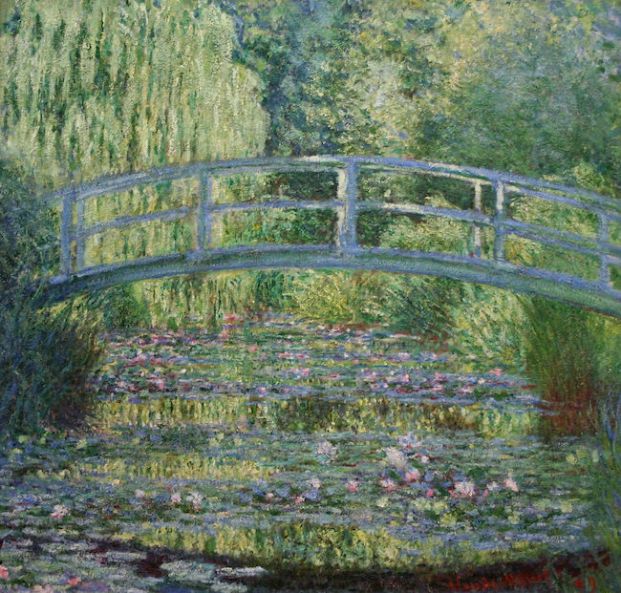
Besides the radical application of paint, the Parisian public was further shocked by the independent artists’ usage of bright colours, as opposed to the academic approach which had favoured a sober palette. At the time of the Impressionists’ emergence, new paints had become available through the development of synthetic pigments, providing vibrant shades of yellow, green, and blue.
The new colours were sold in tubes as they are known today and the pigments did not have to be mixed in the studio anymore, which allowed the artists to venture out painting spontaneously out-doors (“en plein air”) rather than in the studio. Accordingly, key Impressionist subjects were everyday scenes and landscapes, in which the momentary and transient effects of sunlight could be captured. Suburban and rural leisure scenes outside of Paris were depicted by such artists as Monet, Renoir, and Pissarro, who made use of new and convenient railway lines radiating out from the city. The artists worked directly in front of their subjects, using rapid brushwork broken into separate dabs to render the quality of light.

Other artists like Gustave Caillebotte enthusiastically captured the newly renovated city of Paris, large parts of which had been destroyed during the Franco-Prussian war, with its wide boulevards, grand buildings, and public gardens. Degas and Caillebotte further focused on working people, including workmen, singers, and dancers, while others such as Berthe Morisot and Mary Cassatt, depicted leisure activities of the privileged class.

History of Post-Impressionism
Post-Impressionism is an art movement that developed during the 1890s. A major difference between Post-Impressionism vs Impressionism was, that Post-Impressionist artists were not united by a specific aesthetic style. Although the Post-Impressionist artists were all different in approach, they shared an interest in symbolism. What brought them together was further their dissatisfaction with what they believed to be triviality in subject matter and the loss of structure in the style of the Impressionists.
The Post-Impressionist artists were concerned with openly exploring the mind and emotions. With their subjective approach, they strove to evoke emotion, rather than realism, using symbolic motifs, painterly paint application, and unnatural colour. Aiming to shake up the art world of their times, the group including artists such as Vincent van Gogh, Paul Cézanne, Paul Gauguin, Georges Seurat, Henri Rousseau, and Henri Toulouse-Lautrec formed the Post-Impressionist movement.

The term “Post-Impressionism” was coined 1910 by art historian and curator Roger Fry, who called his show “Manet and the Post-Impressionists”, defining it as the development of French art since Manet. Like the artists of the group, Fry was convinced that art should be a stimulus to the imaginative life rather than a copy of life. With this emphasis on abstract qualities and symbolic content, Post-Impressionism included approaches such as Neo-Impressionism art with the Pointillism of Seurat and Signac; the short-lived Synthetism led by Émile Bernard; and Symbolism, which was soon led by Gauguin.
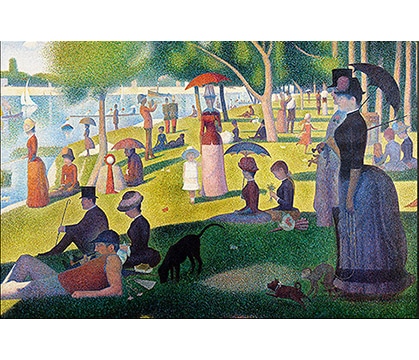
Post-Impressionism Characteristics
Stylistically Post-Impressionism extended Impressionism while rejecting limiting factors: The group continued using vibrant colours, often in thick paint application, but was more inclined to distort real-life subject matter for an expressive effect, to emphasize geometric forms, and to use colour arbitrarily. Unlike the Impressionists who aimed at capturing the effects of natural light on tonality, Post-Impressionists used an artificial and arbitrary colour palette as a way to depict emotion-driven perceptions. The imaginative approach led to saturated hues and a rich range of colour in many of the Post-Impressionist paintings.
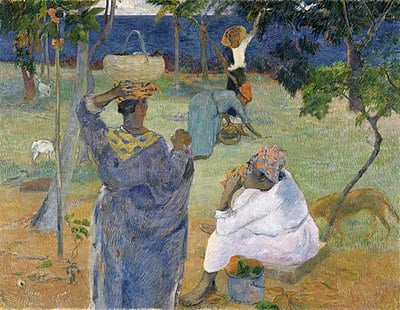
Apart from these unifying factors, approaches were highly individual. For instance, Paul Cézanne concerned himself with restoring a sense of structure to painting by reducing objects to their basic shapes, at the same time keeping the saturated colours of Impressionism. Former Impressionists Camille Pissarro and Georges Seurat experimented with the technique of Pointillism, trying to find a more scientific approach to the division of colour. Vincent van Gogh set out to use colour and emphatic brushstrokes to depict his emotions and his state of mind. Henri Rousseau explored natural scenes from his journeys, notably to the jungle, using vibrant greens and yellows. Many Post-Impressionist works show broad, discernible brushstrokes as before in Impressionism, emphasizing that it is not intended to realistically represent the subject.

Younger artists continued the approaches of van Gogh, Gauguin, and Neo-Impressionism art in the usage of saturated colour and broke away from the Post-Impressionist group to form the movement of Fauvism.
Difference Between Impressionism and Post-Impressionism
Impressionism vs Post-Impressionism Summary
The movement of Impressionism originated in Paris in the late 19th century. Artists were reacting to the changing environment, characterized by urbanisation. Post-Impressionism art characteristics arose in the 1890s as a reaction to Impressionism. What brought the artists together was a shared interest in exploring symbolist meanings and the mind of the artist.
Characteristics of Post-Impressionism and Impressionism
The differences between Impressionism and Post-Impressionism regarding stylistic characteristics are complex since both movements were far from homogenous. Some characteristic features of Impressionist artworks were the use of seemingly spontaneous brushstrokes, the use of vibrant colours, and an emphasis on depicting the changing qualities of light. Common topics were subjects in the modernized urban environment, in outdoor venues, often presented in unusual angles.
Post-Impressionism art characteristics on the other hand encompassed even more diverse styles and characteristics, which makes them impossible to summarize. Post-Impressionist artists chose to paint in styles such as Pointillism, Synthetism, Japonism inspired painting, and Primitivism.

While artists of Impressionism emphasized the quality of colour and often depicted ordinary subjects in their everyday activities, characteristics of Post-Impressionism were defined through their distance from the ordinary and the quest for deep meaning and symbolism. Impressionist artists strove to capture the moment, while Post-Impressionism artists used a more conceptual approach, exploring emotions and meaning.
Accordingly, many paintings of Impressionism were done en plein air, in contrast to Post-Impressionism paintings, which were usually created in the artists’ studios and often involved a much more time-consuming process.
A difference between Post-Impressionism and Impressionism can further be seen in the context of art history: While Impressionism became the basis of Neo-Impressionism, Fauvism, and Post-Impressionism, to define Post-Impressionism art it is not exaggerated to state that this movement was groundbreaking for the entire movement of modern art styles.

Conclusion
Looking at the difference between Post-Impressionism and Impressionism, we can see the following: Just like Impressionism paved the way for Post-Impressionist tendencies, the art styles of the 20th century were made possible through the works of Post-Impressionism—Meaning, that the Post-Impressionist definition encompasses a transition period where Post-Impressionist artists like Vincent van Gogh, Paul Gauguin, and Georges Seurat began to diverge from the fleeting effects of light and color to explore more symbolic, emotional, and structural elements in their work.
Consequently, the Post-Impressionism art movement laid the foundational principles that allowed for the exploration of new perspectives and techniques, influencing the development of various modern art movements.
Without Gauguin and van Gogh, there would have been no Fauvism; without Paul Cézanne’s work, the development of Cubism is unlikely to have happened. Together, Impressionism and Post-Impressionism ushered a dramatic change in the world of art and brought forth some of the most famous pieces of art today.

Recommended Readings
Impressionism and Post-Impressionism: Highlights from the Philadelphia Museum of Art by Jennifer A. Thompson and Joseph J. Rishel
Critical Readings in Impressionism and Post-Impressionism: An Anthology by Mary Tompkins Lewis and Nicholas Green
Basic Art Series. TEN in ONE. Impressionism
Modern Art: Impressionism to Post-Modernism by David Britt

Quick Facts and FAQ
Q: What is Impressionism?
A: Impressionism is an art movement that emerged in the 19th century, focusing on capturing fleeting moments through light and color. It aims to depict scenes from contemporary life and landscapes by conveying the artist’s immediate perception. The impressionism definition underscores its emphasis on spontaneity and the sensory experience of the moment.
Q: What characterizes Impressionism artwork?
A: Impressionism artwork is characterized by loose brush strokes, bright colors, and a focus on light’s changing qualities. It often portrays outdoor scenes, emphasizing the atmosphere and the artist’s impression of a scene over precise details. This approach seeks to capture the fleeting moments of life.
Q: How is Impressionism art defined?
A: Impressionism art is defined by its approach to capturing the essence of a moment, particularly through the use of light and color. This art form challenges traditional techniques by emphasizing an artist’s immediate perception over accurate depiction, marking a significant shift in the art world’s focus.
Q: What comes after Impressionism in art history?
A: After Impressionism, Post-Impressionism emerges as a movement that seeks to build upon and transcend the limitations of Impressionism. It introduces a more deliberate approach to composition and technique, with a continued interest in color and light but with greater emphasis on structure and expression.
Q: What is the Post-Impressionism art movement?
A: The Post-Impressionism art movement represents a diverse collection of styles that developed as a reaction to Impressionism. It encompasses various techniques and visions, aiming to convey deeper emotional or symbolic content. This movement marks a significant evolution in art, exploring new avenues of expression.
Q: How to describe Post-Impressionism artworks?
A: Post-Impressionism artworks are known for their vivid colors, distinctive brushstrokes, and emphasis on geometric forms. These pieces often convey deeper emotional resonance, moving beyond the immediate impressions of Impressionism. The movement includes influential works by artists like Van Gogh and Cézanne.
Q: What distinguishes Post-Impressionism characteristics?
A: Post-Impressionism characteristics include a bold use of color, emphasis on geometric forms, and a tendency towards abstraction. This movement diverges from Impressionism’s focus on naturalism, offering a more introspective and symbolic approach to art, emphasizing personal expression and emotional depth.
Q: How is Post-Impressionism defined?
A: Post-Impressionism is defined as the movement that succeeded Impressionism, aiming to transcend its focus on the naturalistic depiction of light and color. It explores new expressions and techniques, emphasizing the emotional and symbolic aspects of art, marking a pivotal moment in the evolution of modern art.
Q: What is a Post-Impressionist painting characterized by?
A: A Post-Impressionist painting is characterized by vivid colors, distinctive brushstrokes, and a departure from the accurate depiction of nature. Instead, these paintings prioritize emotional expression, structural form, and the artist’s subjective experience, offering a deeper exploration of personal and symbolic themes.
Q: What is the difference between Expressionism and Impressionism?
A: The key difference between Expressionism and Impressionism is their approach to capturing reality. Impressionism focuses on depicting the transient effects of light and color on surfaces, aiming to capture moments as they appear to the naked eye, often with a focus on natural landscapes and daily life. It utilizes loose brushwork and light color palettes to achieve a sense of movement and spontaneity. On the other hand, Expressionism seeks to express the inner emotional state of the artist, often through exaggerated and distorted visuals. This movement employs bold colors and dynamic brushstrokes to evoke emotional responses, focusing on subjective interpretations of the world rather than direct observations.
Q: How does Post-Impressionist art differ from its predecessors in general?
A: Post-Impressionist art differs from its predecessors by its bold experimentation with color, form, and technique, aiming to convey deeper meanings and emotional experiences. This art form allows for a more personal and introspective exploration, marking a departure from the impressionistic emphasis on naturalistic depiction.
Q: Who are some notable Post-Impressionist artists?
A: Notable Post-Impressionist artists include Vincent van Gogh, Paul Cézanne, Georges Seurat, and Paul Gauguin. Each artist brought a unique approach to color, composition, and form, significantly influencing the development of modern art. Seurat introduced pointillism, a technique using dots of color to create images, while Gauguin is known for his use of color and symbolic content. Together, these artists expanded the boundaries of artistic expression, challenging traditional conventions and laying the groundwork for future movements.
Q: How is Post-Impressionism artwork unique?
A: Post-Impressionism artwork is unique for its vivid use of color, innovative brushstrokes, and exploration of geometric forms, moving beyond the Impressionist focus on capturing the ephemeral. It delves into emotional depth and symbolic content, allowing artists to express personal visions and emotional states through their work, marking a pivotal evolution in art history.
Q: What defines Post-Impressionism art?
A: Post-Impressionism art is defined by its departure from Impressionism, with artists exploring deeper psychological and emotional expressions through bold colors, distinct forms, and innovative techniques. This movement signifies a shift towards more abstract and conceptual art, emphasizing personal interpretation and the emotional impact of artwork.
Q: What is the essence of an Impressionist’s approach to painting?
A: The essence of an Impressionist’s approach to painting lies in capturing the transient effects of light and atmosphere, focusing on their sensory impressions rather than detailed, accurate representations. This approach revolutionized art by emphasizing momentary experiences and the subjective perspective of the artist, offering a new way to perceive and depict the world.
Q: How do Post-Impressionist paintings reflect the artists’ intentions?
A: Post-Impressionist paintings reflect the artists’ intentions by transcending the observational focus of Impressionism to explore deeper emotional and symbolic meanings. These works often exhibit a personal style that conveys the artist’s inner thoughts and feelings, using color, form, and composition to express complex ideas and emotions.
Q: How do you differentiate Post-Impressionism from Impressionism in terms of artistic goals?
A: To differentiate Post-Impressionism from Impressionism in terms of artistic goals, it’s important to note that Post-Impressionism seeks to convey deeper emotional and symbolic content, using bold colors and innovative techniques. While Impressionism captures fleeting moments with a focus on light, Post-Impressionism explores the emotional and structural aspects of art, reflecting a more introspective and conceptual approach.
Q: What materials do I need to start painting in the Impressionist style?
A: To start painting in the Impressionist style, you’ll need a basic set of materials including soft brushes of various sizes, a palette of vibrant oil or acrylic paints (focusing on primary colors plus white), a canvas or canvas board, and a palette knife for mixing colors. Impressionists often painted outdoors, so consider portable easels and supplies for plein air painting.
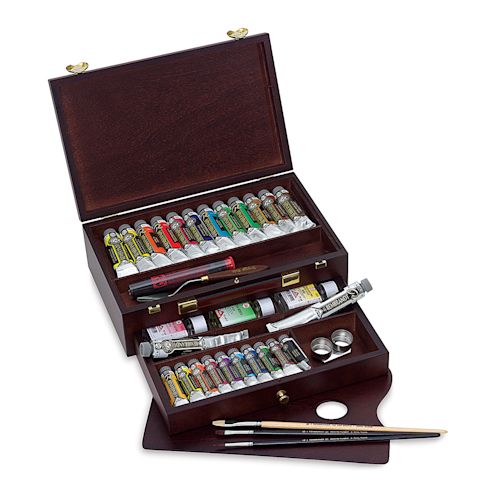
Explore the rich colours and superior blending capabilities of Rembrandt Artists’ Oil Paints, perfect for artists seeking quality and longevity.
Q: How do I choose a scene or subject for my Impressionist painting?
A: Choose a scene or subject that captures the essence of a moment, focusing on landscapes, urban scenes, or everyday life that reflects changes in light and color. Impressionists favored natural light and its effects, so look for scenes with interesting light conditions, such as sunrise, sunset, or reflections on water, to convey the fleeting moments of light and color.
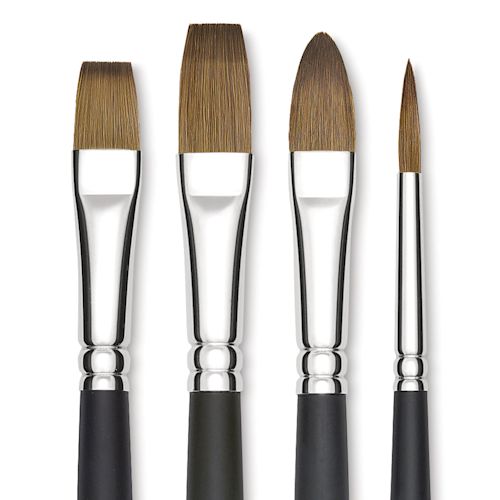
Blick Masterstroke Finest Red Sable Brushes
Q: What techniques should I use to create a Post-Impressionist painting?
A: To create a Post-Impressionist painting, experiment with bold colors, distinctive brushstrokes, and the use of color for emotional impact rather than just to replicate reality. Techniques such as pointillism, where small, distinct dots of color are applied in patterns to form an image, and cloisonnism, characterized by bold and flat forms separated by dark contours, are notable. Focus on expressing your personal vision and emotions through your artwork.
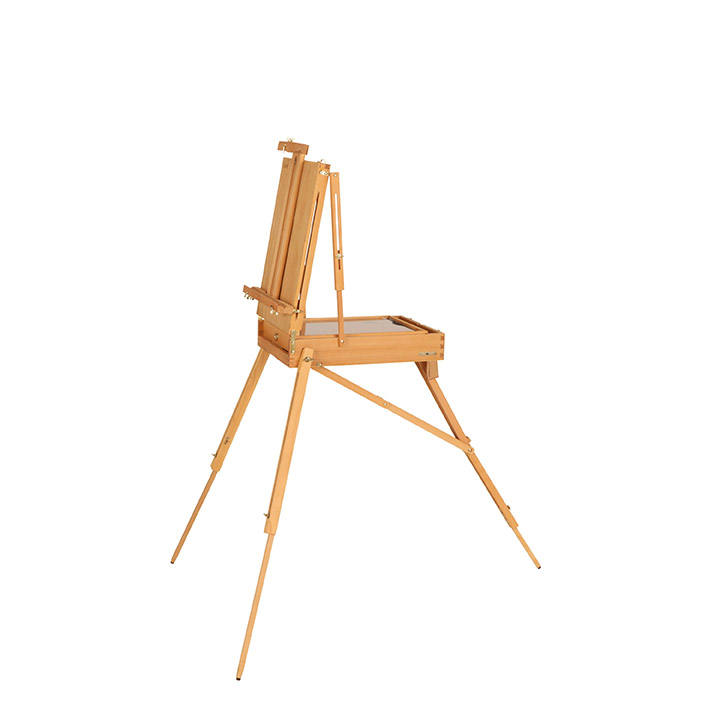
Discover the versatility and portability of the Jullian Original French Easel, ideal for artists who love to paint outdoors or in the studio.
Q: How can I mimic the brushwork of Impressionist artists?
A: Mimic the brushwork of Impressionist artists by using quick, short brush strokes to capture the essence of the subject rather than its details. Play with light and its reflections by mixing colors directly on the canvas and applying paint in a loose and expressive manner. This approach helps to create the vibrant, shimmering effect characteristic of Impressionist paintings, emphasizing movement and the changing qualities of light.
Q: Are there any specific color palettes or mixing techniques unique to Post-Impressionism?
A: Post-Impressionism is known for its use of vivid, often unnatural colors to convey emotion and depth. Experiment with color palettes that include both bright and deep hues, and don’t be afraid to use colors in ways that deviate from their realistic appearance. Mixing techniques can include layering contrasting colors to create vibrancy and depth, or using colors side by side in a way that they visually mix at a distance, creating a dynamic and expressive effect in your artwork.

Liquitex Basics Metal Painting Knives
Q: Which type of paint best captures the luminous Impressionist art characteristics?
A: Oil paints are traditionally favored for Impressionist art due to their rich texture and depth, allowing for subtle color blending that captures the luminous quality of natural light. However, acrylics can also be a good choice for beginners due to their quick drying time and versatility, allowing for easy experimentation with Impressionist techniques.
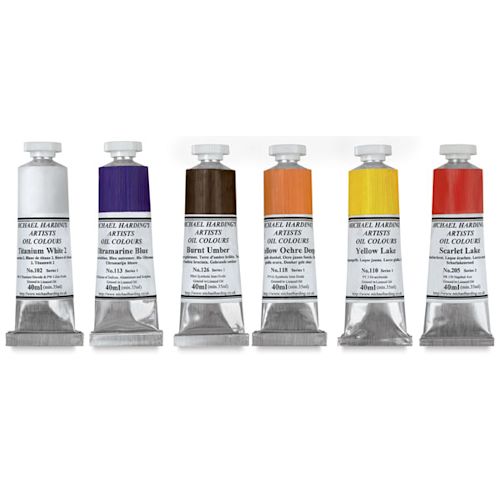
Michael Harding Artists’ Oil Paints and Set
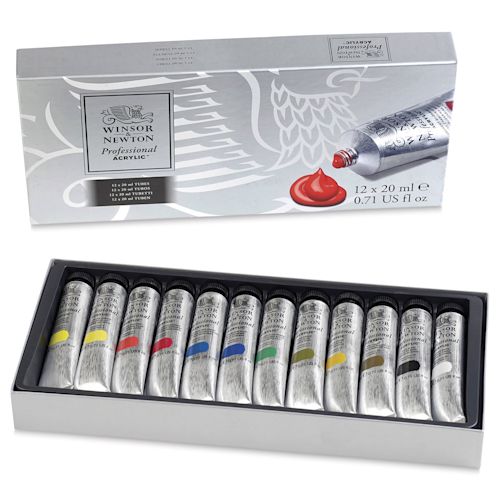
Winsor & Newton Professional Acrylic Paints and Sets
Q: What canvas size and type are recommended for creating Impressionist paintings?
A: Impressionist paintings often vary in size, but starting with a medium-sized canvas (around 16×20 inches) can offer a manageable surface for capturing landscapes or scenes with detail. Linen canvases are preferred for their fine texture and durability, which can better hold the light brushstrokes and texture of Impressionist painting.
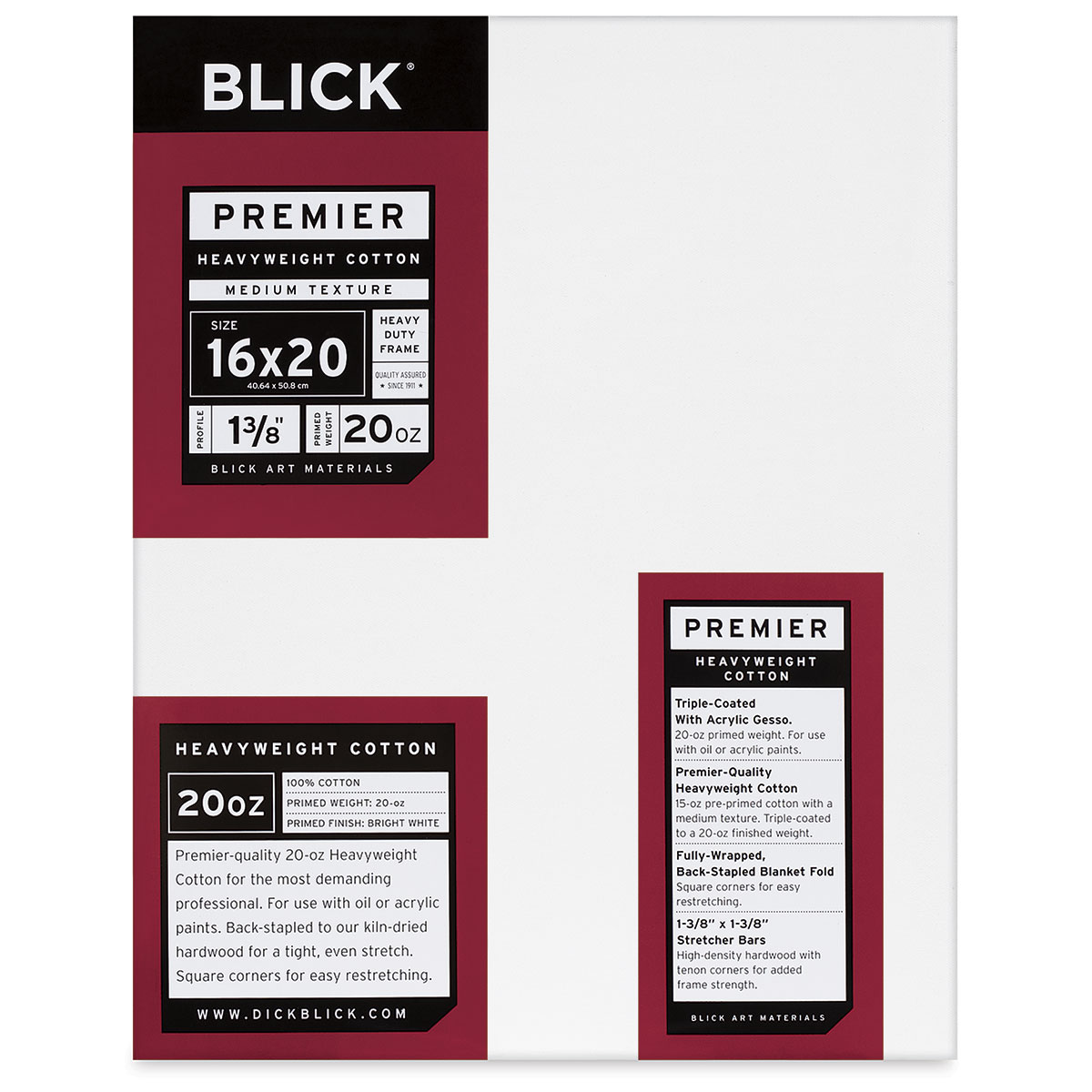
Intended for the most demanding professional, Blick Premier Heavyweight Cotton Canvas is made from professional-grade, archival-quality 100% cotton duck. This canvas is triple-primed with acid-free Titanium gesso to reach a 20 oz finished weight. – Blick
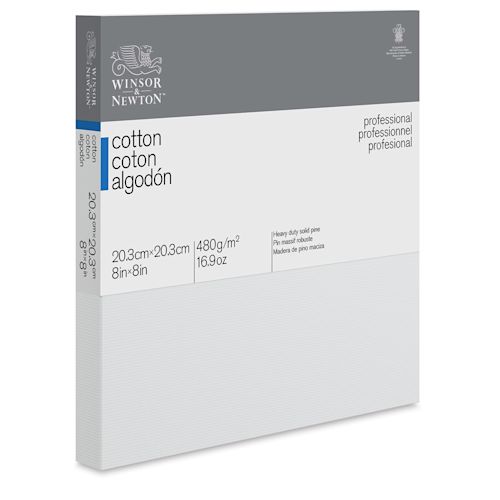
Explore the quality and performance of Winsor & Newton Professional Cotton Canvas, perfect for artists seeking high-quality materials for their works.
Q: Can watercolors be used for Impressionist or Post-Impressionist style paintings?
A: Yes, watercolors are suitable for both Impressionist and Post-Impressionist art, particularly for capturing the fluid and ephemeral qualities of light and color central to Impressionism definition in art. The medium’s ability to layer and blend easily makes it conducive to expressing the spontaneous essence and characteristics of Impressionism.
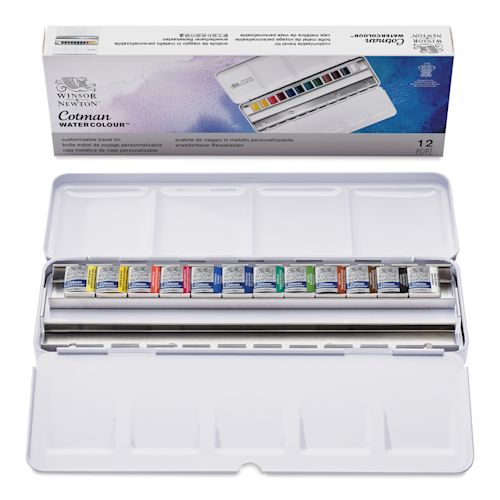
Explore the vibrant, high-quality Winsor & Newton Cotman Watercolor Pans, perfect for artists of all levels seeking affordability without compromising on quality.
Q: How important is the choice of palette when attempting Impressionist or Post-Impressionist painting?
A: The choice of palette is crucial in Impressionist and Post-Impressionist painting, as color is a key element in conveying mood, atmosphere, and light. Impressionists often used pure, bright colors applied side by side to create a vibrant, shimmering effect, while Post-Impressionists might choose more symbolic or expressive colors. Experimenting with both historical palettes and personal preferences can lead to unique and expressive works.
Q: Are there any specific brushes or tools that can help achieve the texture of Impressionist paintings?
A: To achieve the texture seen in Impressionist paintings, use a variety of brushes, including flat, round, and filbert brushes with both stiff and soft bristles. Stiff bristle brushes are great for applying thick paint and creating the textured, visible brushstrokes characteristic of Impressionism. Palette knives can also be used to apply paint thickly and create dynamic textures on the canvas, adding to the movement and vibrancy of the scene.

Explore the durability and versatility of Robert Simmons Signet Bristle Brushes, perfect for artists seeking high-quality painting tools.
You might also enjoy reading the following posts by Pigment Pool:
600 Art and Drawing Ideas to Ignite Your Imagination
10 Lesser-Known Impressionist Artists You Must Discover: Beyond Monet and Renoir
Impressionists and Photography: How the Camera Changed Art Forever
Why Abstract Art is good for Us: Abstract Art and the Brain
The Best Acrylic Paint Set for Artists and Hobbyists In 2022
